Top things to do in Dien Bien Phu

Dien Bien Phu is a city in northwestern Vietnam, best known for the decisive Battle of Dien Bien Phu in 1954, which marked the end of French colonial rule in Indochina and led to the Geneva Accords, dividing Vietnam into North and South. Dien Bien Phu is renowned for its historical significance and natural beauty.
>>> Apply Visa to Vietnam <<<
Today, the city is a growing regional hub with improved infrastructure, tourism, and a deeper emphasis on preserving its wartime history.
Here are some top attractions to consider during your visit:
- Dien Bien Phu Victory Museum
The museum, located on Võ Nguyên Giáp Street in Điện Biên Phủ City, houses thousands of documents and artefacts associated with Việt Nam’s historic victory over French troops in 1954, which “resounded across the five continents and shook the globe”.
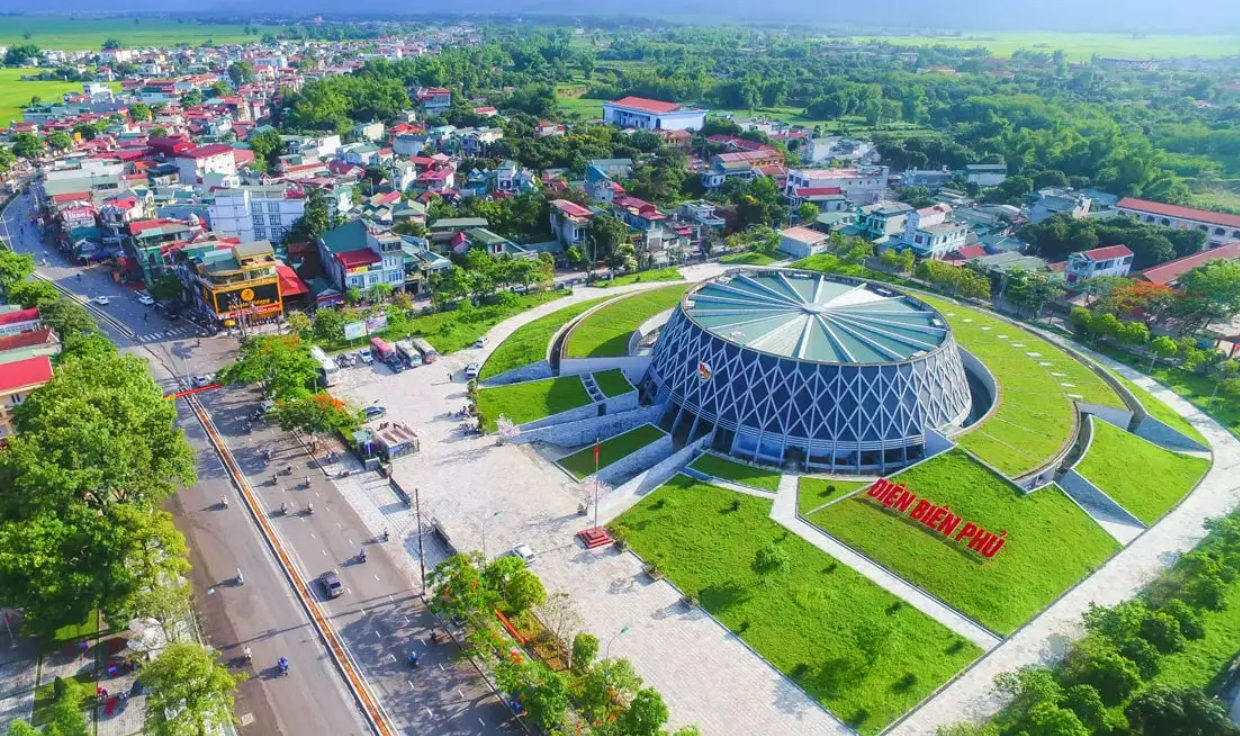
The exhibition area is arranged on the first floor of the museum on a space of 1,250sq.m. It houses nearly 1,000 documents, artifacts, photographs and maps, making it a modern exhibition space.
The highlight of the museum is a large panoramic artwork, one of the world’s largest war-themed oil paintings, depicting the Điện Biên Phủ battlefield at different times from late 1953 to May 7, 1954.
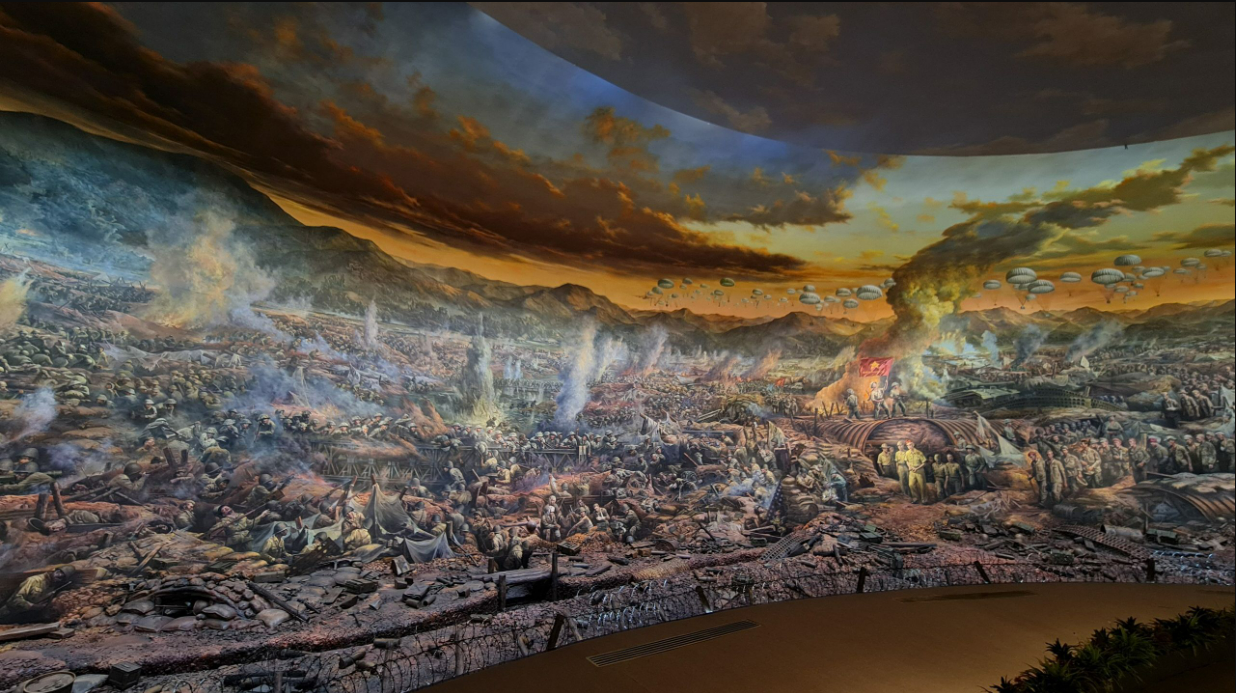
The extraordinary circular oil on canvas is 132m long, 20.5m high and 42m in diameter. Featuring 4,500 characters, the artwork depicts the entire army going to battle, the opening combat at Him Lam Hill, the A1 Hill battle, and the final triumph.
It was created by nearly 200 painters, architects, musicians and technicians, starting in November 2019 and completed in May 2022.
- A1 Hill (Eliane 2)
In the spring of 1954, the Battle of Điện Biên Phủ raged in northwestern Việt Nam as Việt Minh, or the Vietnamese Resistance forces, besieged French troops entrenched in a valley surrounded by mountains.
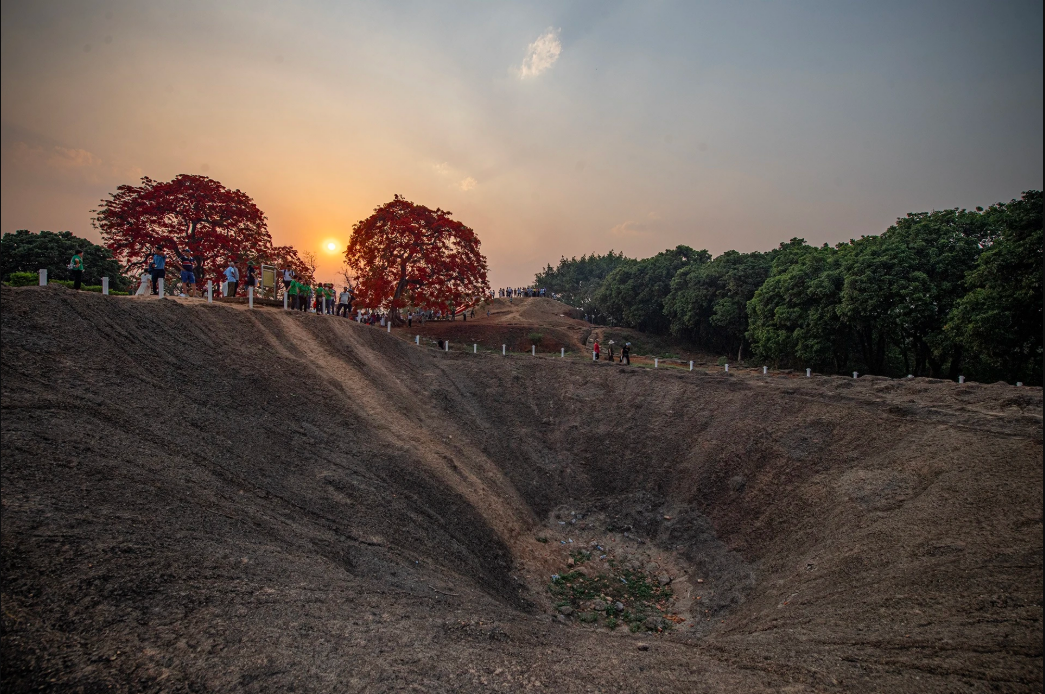
Among the fiercest fights was the assault on Hill A1 (identified as Strongpoint Eliane 2 by the French), a heavily fortified outpost that General Võ Nguyên Giáp [commander-in-chief of the Vietnam People’s Army] described as “the key” to breaking the French “Hedgehog”.
The 56-day and night siege of Điện Biên Phủ ended in a decisive French defeat leading to the Geneva Accord restoring peace in Indochina. But victory came at a tremendous cost, with the brutal struggle for Hill A1 exemplifying the sacrifice required to prevail against colonial forces.
- Colonel de Castries’ Bunker
Located on Hill A1 of the Dien Bien Phu stronghold, the De Castries bunker was built with the sturdiest materials of the time capable of withstanding various types of firepower and surrounded by barbed wire. The bunker served as the working and living quarters for General De Castries and his French command staff.
After 56 days and nights of heroic combat, at 17:30 on May 7, 1954, Company 360 of Regiment 209, Division 312 captured the French General De Castries in his bunker.

Today, the bunker is preserved as a national historical site, attracting visitors to learn about the Dien Bien Phu victory.
The De Castries bunker stands as a testament to the resilient spirit and unity of our people and soldiers during the war against French colonialism. It is a must-visit for those who want to explore and understand the nation’s heroic history.
- Dien Bien Phu Victory Monument
A grandiose monument was installed on D1 Hill in Dien Bien City on the 50th anniversary of Dien Bien Phu Victory (1954-2004), to remind the viewers of this significant historical event. Generations of Vietnamese people will have a chance to enjoy this artistic work while recalling the merits of their forefathers, who, half a century ago, filled more glorious pages in the nation’s history.
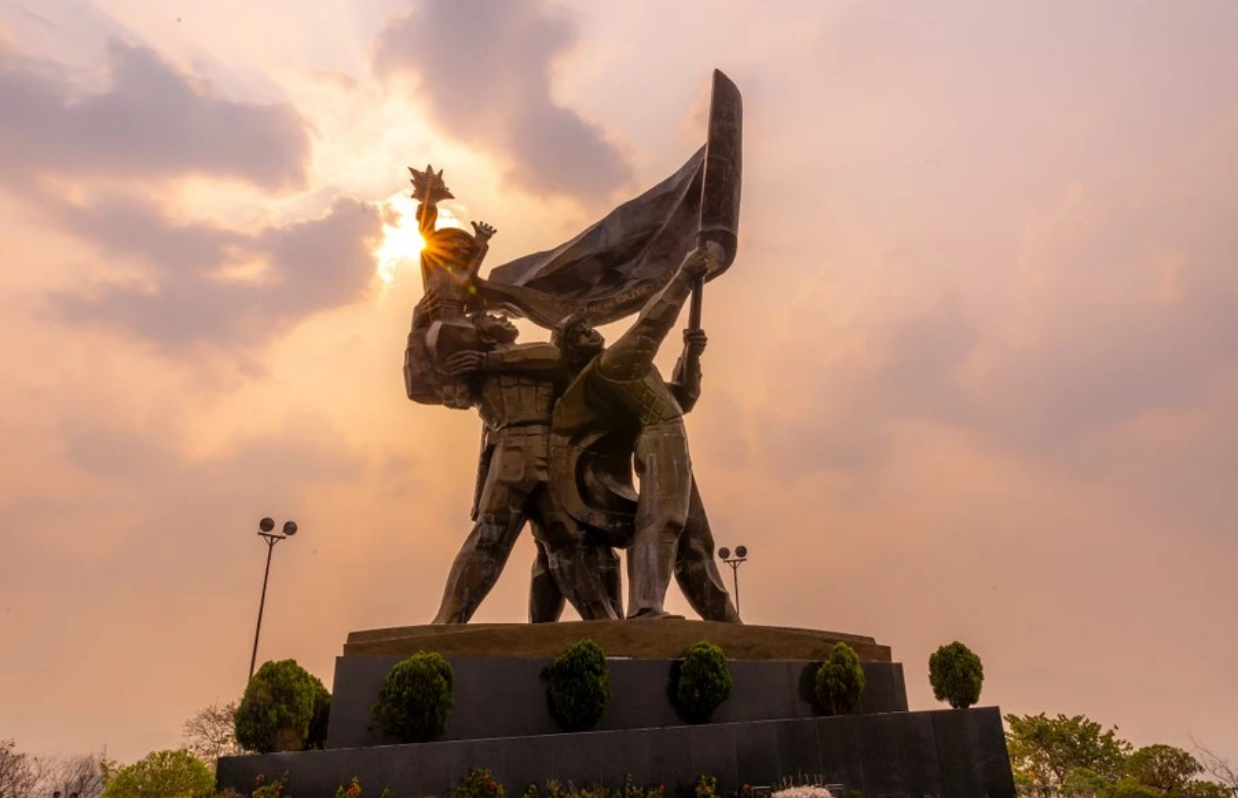
The monument is 16.2 m high (the sculpture is 12.6 m and its base, 3.6m). It was re-produced according to the original statue by famous sculptor Nguyen Hai, which has been displayed at the Vietnam Museum of Fine Arts and was awarded three national-level prizes. At present, it is the biggest bronze statue in Vietnam.
- Muong Thanh Bridge
Muong Thanh Bridge, also known as “Prenley” bridge by the French military, is a bridge across the Nam Rom River, built by the French. The bridge is a military project located in the central subdivision of the Dien Bien Phu base group.
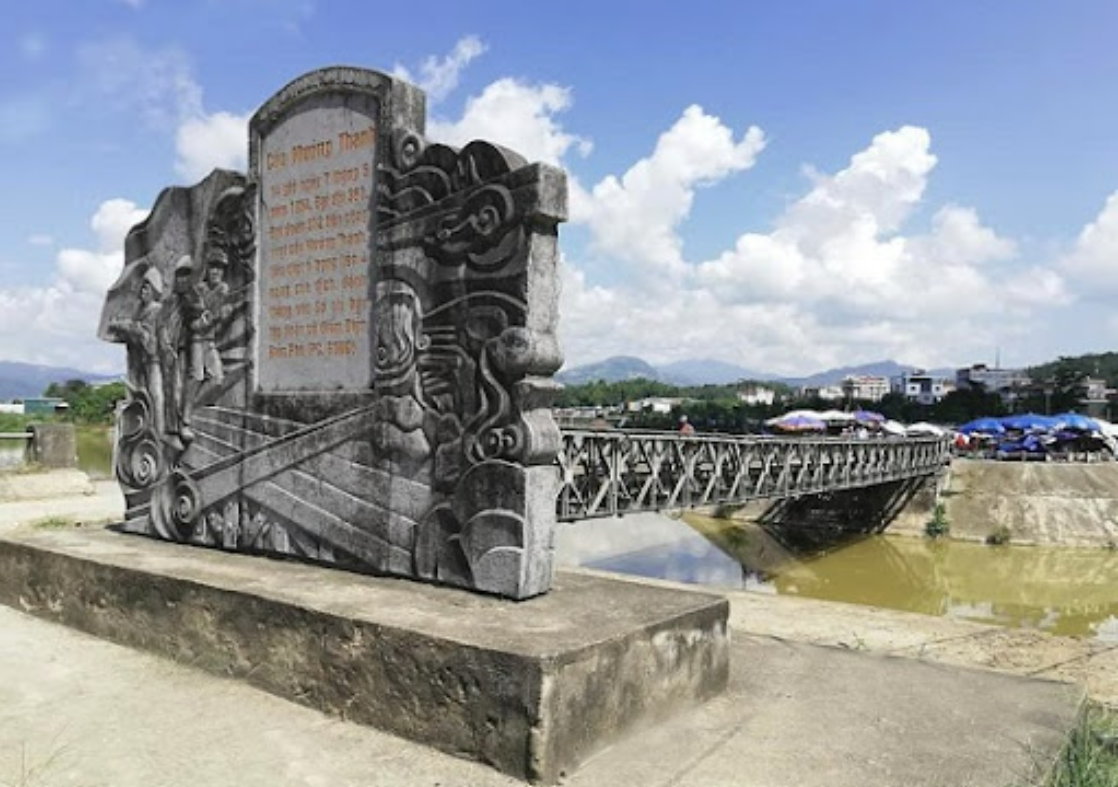
Initially, Muong Thanh bridge was built by the French after parachuting to occupy Dien Bien Phu. In the end, the bridge became a means of guiding the way for our soldiers to attack, planting the Decisive Victory flag on the roof of the bunker of defeated General De Cat.This was the biggest victory in the long resistance war against the French colonialists and American interventionists, and also the most famous victory in the history of the Vietnamese people against foreign invaders.
- Pa Khoang Lake
Located in Muong Phang commune, Dien Bien district, the position of Pa Khoang lake is very convenient, near the road 279, about 20 km from Dien Bien Phu city, linking Dien Bien Phu city with Muong Phang historical and cultural forest where the relics of the Command of Dien Bien Phu compaign remains.
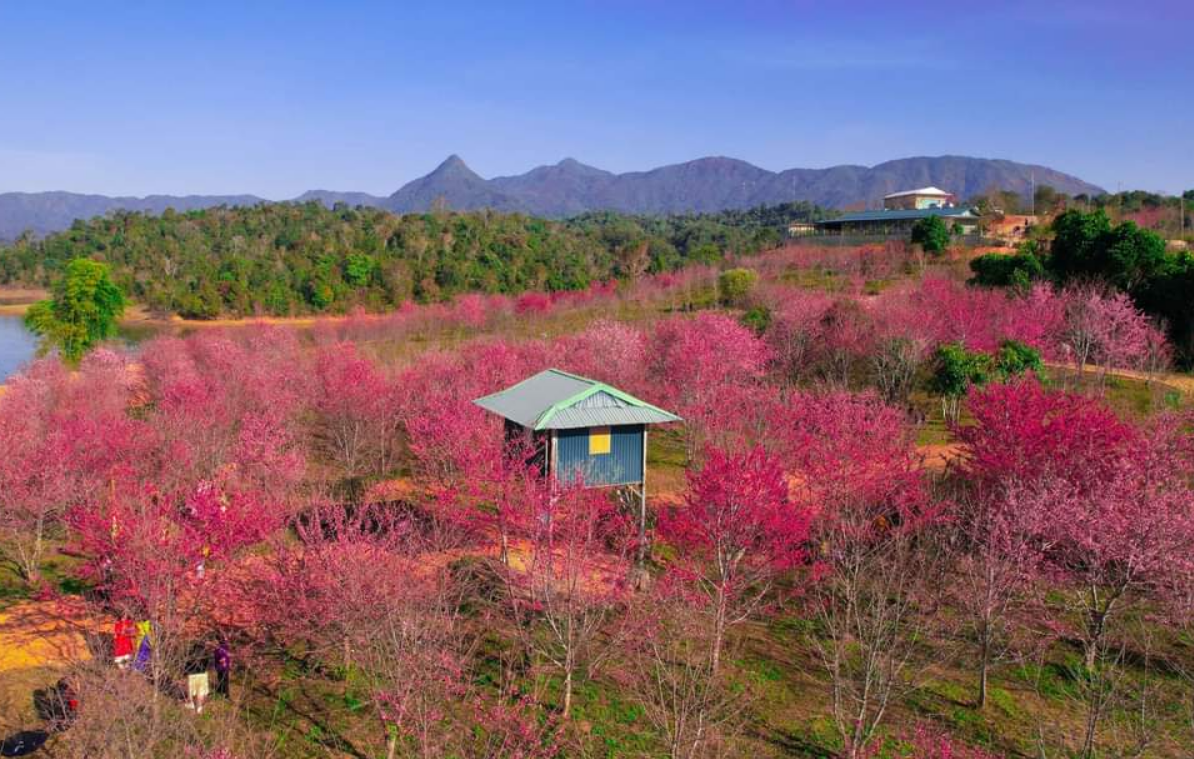
The total area of 2,400 ha, in which 1,320 ha of forest area, 300 ha of farming land, 150 ha of basic construction, and 600 ha of water surface area (the lake contains about 37.2 million m3 of water), the Pa Khoang tourist complex has many favourable conditions for tourist activities such as diverse plants, various topography, mountainous tropical weather, etc.
- Pha Din Pass
Pha Din Pass has a total length of 32km. It’s located on Highway 6, which is divided between Son La and Dien Bien provinces. The old Lai Chau (now Dien Bien) and Son La also handed down a story about dividing the two provinces by a horse race over Pha Din.
The highest point of the pass is 1648m above sea level. The terrain of the mountain is very dangerous, uneven, one side is steep and one is deep. The contiguous place between the land and sky, according to the language of the Thai people. It’s also the beginning of the journey of dragging high-level artillery with the strength of the Vietnamese soldiers in the campaign that led to the victory of Dien Bien Phu history. 7-5-1954.
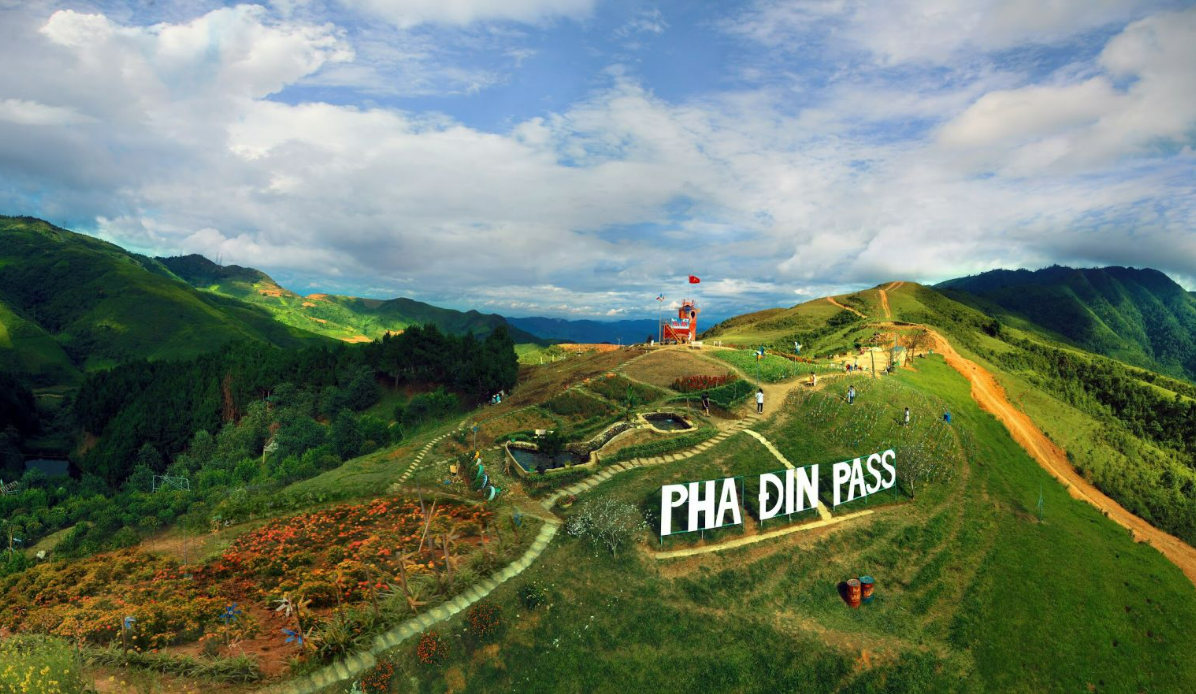
Pha Din is also a pass with a great slope from 12% to 19%. The mountain pass is meandering in figure 8. There are many sleeves with high slope and curve radius of less than 15m. Geology here is also very weak in the rainy season often occurs sliding, blooming, slipping and landslides. And it is challenging the adventurous people to get the beauty that is hard to resist on the top of the pass.
These attractions provide a blend of historical depth and natural beauty, ensuring a memorable experience in Dien Bien Phu.